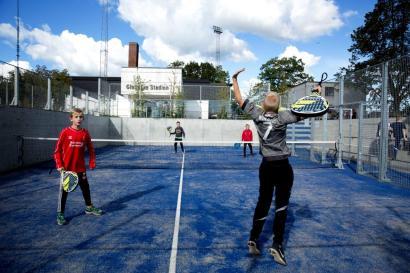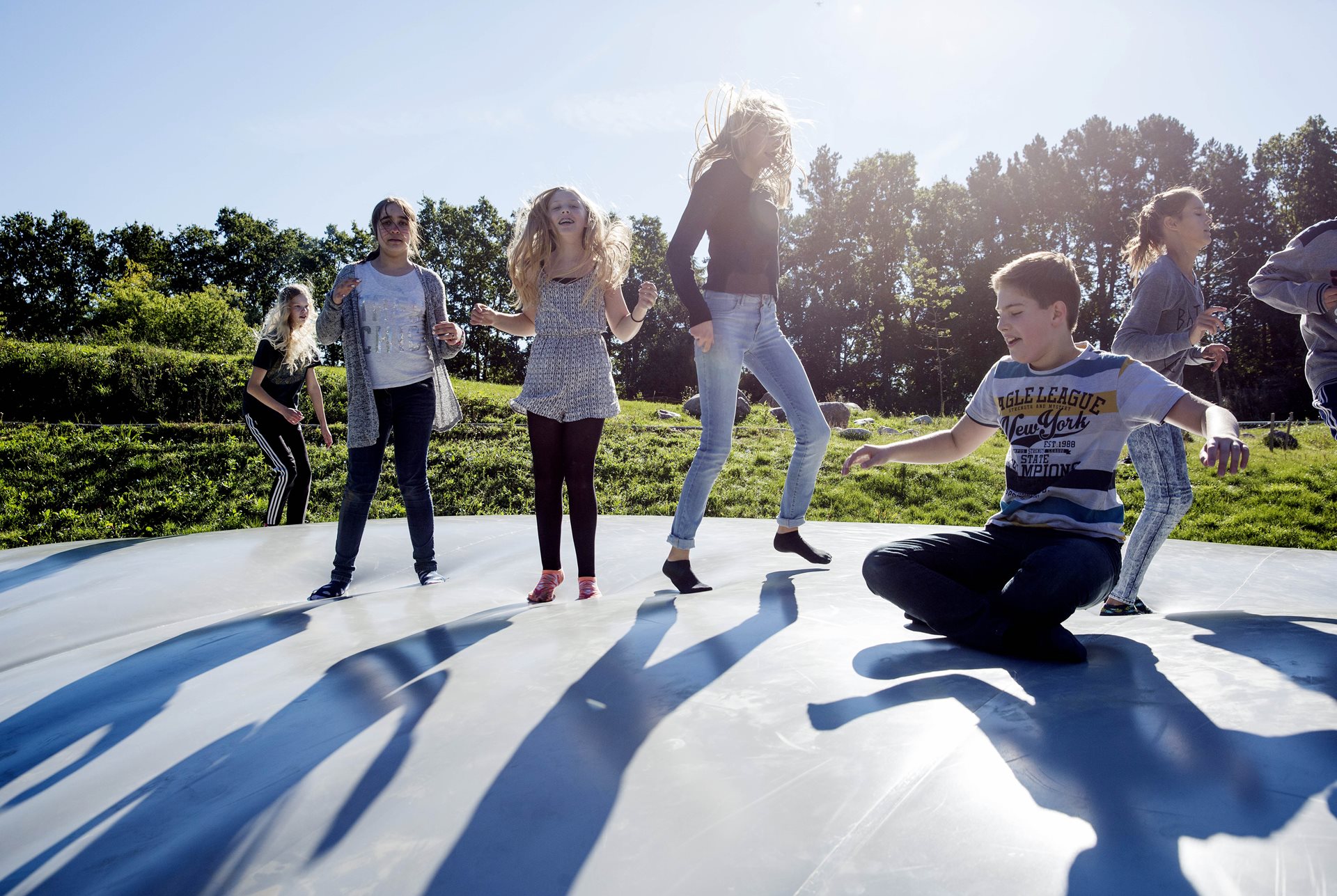Wather in the sidelines
One of the major challenges in the future wastewater planning is the impact of climate change which means more frequent and heavier cloudbursts. Gladsaxe is the home of one of the largest climate adaptation projects in Denmark. 14 rainwater reservoirs, path systems and trenches keep the rainwater away from roads, sewers and basements when heavy rainfall strikes.
With a total capacity of 7,600 m3, the facilities drain surface water from 142 hectares of Gladsaxe Municipality and reduce both infrastructural and environmental costs when heavy rainfall strikes. In dry weather, the facilities provide the settings for sports activities and recreational areas for the benefits of the citizens. For example, bicycle traffic has increased by 30 % on the new path systems. That reduces the carbon footprint of the municipality by 99 tonnes.
Climate adaptation & Recreation
Water on the Sidelines consists of 14 new rainwater reservoirs and a number of trenches and canals that collect rainwater from the Grønnemose neighbourhood, the Marielyst neighbourhood and Gladsaxe Sports Centre. The basins and canals collect the rainwater and take it through the Water Pipeline Path to large rainwater lakes at Høje Gladsaxe Park. The facilities have a total capacity of 7,600 m3 and reduce both infrastructural and environmental costs in connection with cloudbursts and heavy rainfall for the municipality. For example, the climate adaptation of the Marielyst neighbourhood has reduced rainwater on roofs and solid surfaces in the area by 84 %.
In dry weather, the facilities provide the framework for sports activities and recreational areas. New path systems along basins and trenches invite cyclists, walkers and runners into the facilities, and in the recreational space, people have a view of the activity areas, such as skateboard and BMX areas, jumping pillows, paddle tennis courts and outdoor training facilities. Since the opening of the area, Gladsaxe Municipality has seen a 30 % increase in bicycle traffic on the path systems, and according to SUSTANIA, this means that the municipality reduces its carbon footprint by 99 tonnes annually.
Double Functions, Economics & Branding
The climate project in Gladsaxe shows how climate adaptation can be successfully combined with an improved urban environment and opportunities for being active in nature and add economic and social value. According to the accounts of Vandplus, the price of a conventional technical underground facility would have been DKK 102 million. The price of the combined facility with both recreational and technical double functions above ground was DKK 80.8 million, corresponding to savings of DKK 29 million.
“We need to use the investments in climate adaptation to also upgrade our urban environments, create an active urban life and improve the quality of life for everyone. The project here in Gladsaxe is a perfect example of that, where rainwater management goes hand in hand with new urban spaces for high activity levels or exercise or general outdoor relaxation.” Anne-Mette Gjeraa, project manager Realdania, 2015

About the case
The climate adaptation of Gladsaxe includes residential areas, sports centres, Høje Gladsaxe Park and the water pipeline path established. Lakes, canals, flower beds, rainwater drains and basins together manage the surface water of 1,900 flats in Høje Gladsaxe and about 800 homes in the Marielyst and Grønnemose neighbourhoods. On top is Caféhaven which consists of five connected basins, known as ‘Legedammene’ (the Play Ponds) that have jumping pillows, training facilities, water playground and playing fields. Next to the ice skating hall is the ‘Skatebalje’ (Skate Bowl) where skaters and BMX riders can have fun. Furthest to the south, there are two basins with space for paddle tennis and ‘Pigeværelset’ (the Girl’s room) established specifically for young people who have been involved in the design process. The Water Pipeline Path has been established along an existing bicycle path in Høje Gladsaxe Park which has a recreational environment with a stream and a range of open rainwater lakes and reservoirs; an inspiring and attractive landscape space that drains surface water from 142 hectares of Gladsaxe Municipality
